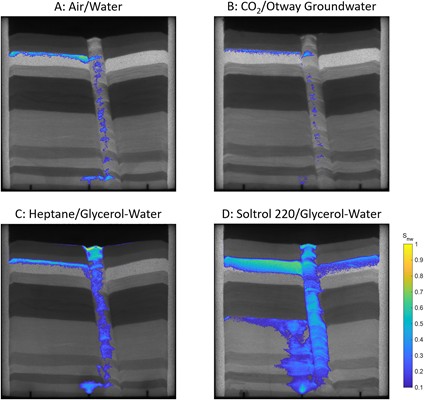Laboratory Sand Tank Modeling of the Brumbys Fault CO2 Controlled Release Field Experiment
Hailun Ni, Andrew Feitz, Eric Tenthorey, Hadi Nourollah, Katherine Romanak, Claire Patterson, and Susan Hovorka
Geophysical Research Letters, 2025, https://doi.org/10.1029/2024GL113918.
Study Summary

Ensuring the safety and security of geological CO2 storage projects is critical. Geological faults can be potential leakage pathways if the fault is not fully sealed to fluid flow. To better understand how CO2 would behave in the unlikely case it leaks through a fault, we built physical models using different-sized glass beads and used various fluids to mimic the properties of CO2 and brine at reservoir conditions. These sand tank experiments were modeled after a field site at the Otway International Test Center in Australia, where CO2 was injected into a shallow fault. Results obtained from the laboratory experiments were then compared with both reservoir simulation and subsequent field test results. There was a good match between the sand tank results and the field experiment. This study demonstrates how sand tank experiments can be used to yield useful insights into CO2 flow at geological faults.
Why is this research important and why do the results matter?
- Laboratory sand tank fluid flow experiments were conducted to compare how lab simulations are comparable to field results.
- Different analog fluids were used to model CO2 injection through an open fault at both shallow and deep depths, which proved to align well to what has previously been seen in an Australian field injection program.
- Experimental results were able to match field plume breakthrough time using inspectional scaling analysis, which suggests that models in the sand tank lab are likely to predict field-scale outcomes.
Link(s)
Gulf Coast Carbon Center: https://gccc.beg.utexas.edu/
Sand Tank Lab: https://gccc.beg.utexas.edu/research/sand-packs